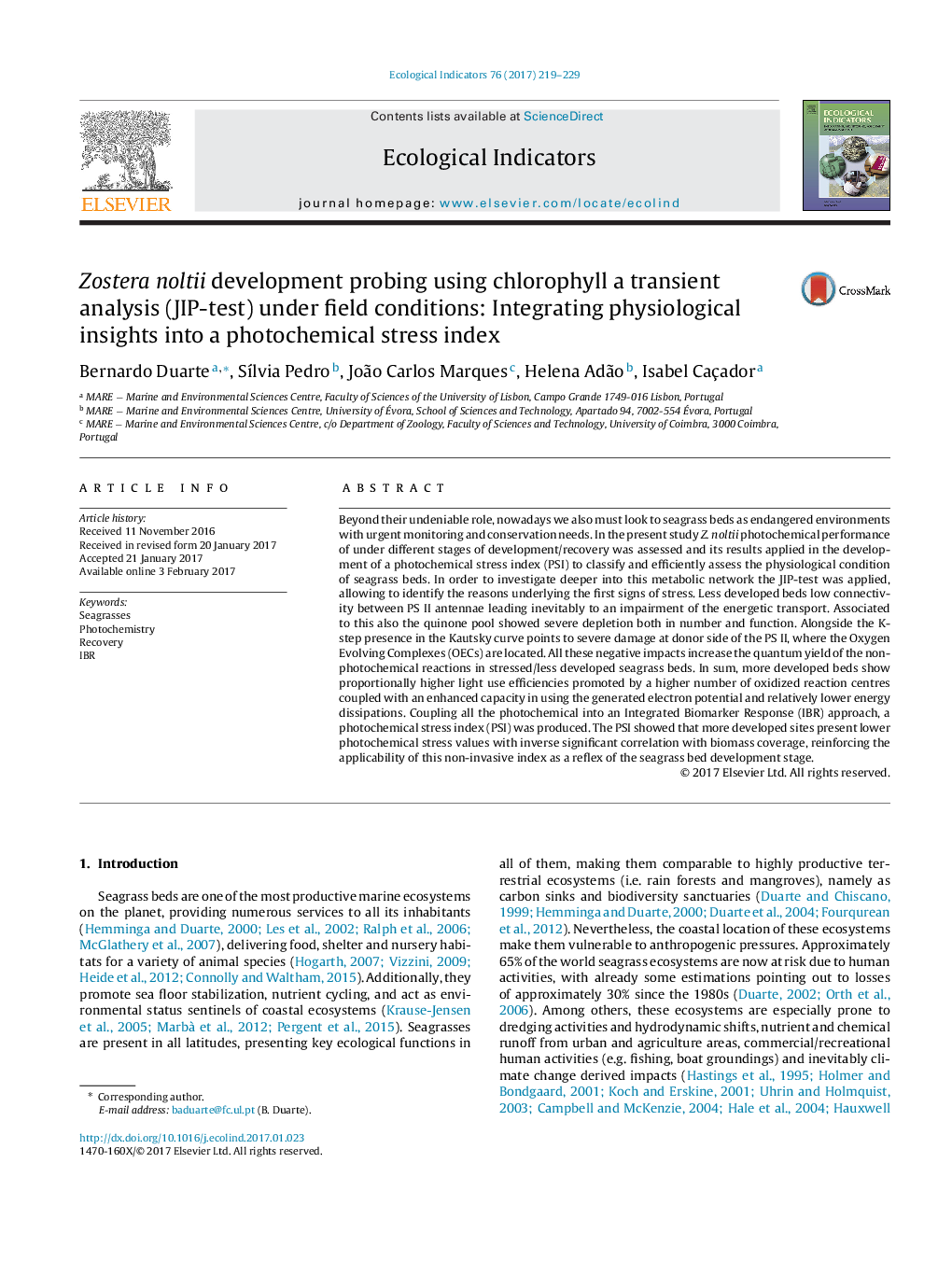| Article ID | Journal | Published Year | Pages | File Type |
|---|---|---|---|---|
| 5741686 | Ecological Indicators | 2017 | 11 Pages |
Beyond their undeniable role, nowadays we also must look to seagrass beds as endangered environments with urgent monitoring and conservation needs. In the present study Z. noltii photochemical performance of under different stages of development/recovery was assessed and its results applied in the development of a photochemical stress index (PSI) to classify and efficiently assess the physiological condition of seagrass beds. In order to investigate deeper into this metabolic network the JIP-test was applied, allowing to identify the reasons underlying the first signs of stress. Less developed beds low connectivity between PS II antennae leading inevitably to an impairment of the energetic transport. Associated to this also the quinone pool showed severe depletion both in number and function. Alongside the K-step presence in the Kautsky curve points to severe damage at donor side of the PS II, where the Oxygen Evolving Complexes (OECs) are located. All these negative impacts increase the quantum yield of the non-photochemical reactions in stressed/less developed seagrass beds. In sum, more developed beds show proportionally higher light use efficiencies promoted by a higher number of oxidized reaction centres coupled with an enhanced capacity in using the generated electron potential and relatively lower energy dissipations. Coupling all the photochemical into an Integrated Biomarker Response (IBR) approach, a photochemical stress index (PSI) was produced. The PSI showed that more developed sites present lower photochemical stress values with inverse significant correlation with biomass coverage, reinforcing the applicability of this non-invasive index as a reflex of the seagrass bed development stage.
